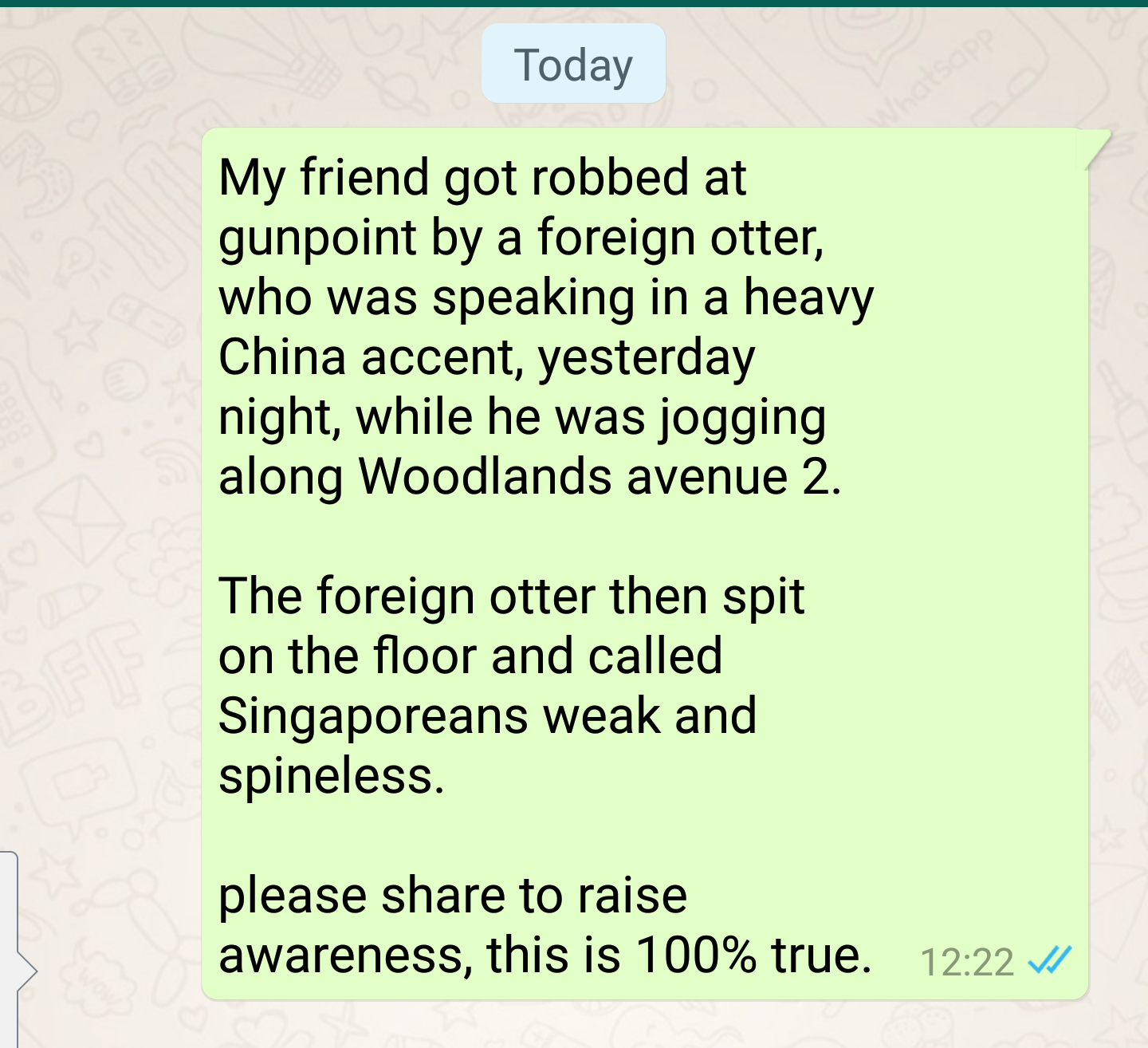This is the age of spin.
Where an excess of information has rendered many either unwilling or unable to check the factual accuracy of news, especially of news that get passed around in family group chats.
Take this recent picture floating around on Singapore Twitter.

The text accompanying it urges caution if that lady arrives at your doorstep collecting signatures for insecurity.
Now, even if we don't really understand what insecurity is, the story reeks of falsehoods.
Firstly, the idea that 3 men are crouching down behind her in plain view in Singapore is quite absurd.
Secondly, if this is happening in plenty of neighbourhoods in Singapore, you can be sure that it will be a front page news story.
But how do these dumb hoaxes get started in the first place?
Quite simply, through a mix of maliciousness and naïveté.
What can we do about the dumb hoax? Well, the best thing to do is to ensure you can spot one.
So let's break down the formula.
Formula
The dumb hoax is made out of 3 integral parts.
1. Utilising personal experience
The dumb hoax thrives on an illusion of personal experience.
A personal experience, no matter how contrived, will ironically be viewed with more credibility by some than actual news reports.
Take this story for example.
An otter robbed a person of his money at Woodlands avenue 2.
Nothing spectacular right? No one's going to share this, your uncle has better things to do.
But what if I add this little snippet to the sentence.
My friend got robbed at gunpoint by an otter while he was jogging along Woodlands avenue 2.
Much better. Now, your uncle might do a double take, maybe read the message a few more times, but he might still not be inclined to share it.
That's because he doesn't feel the urgency just yet.
This is where the 2nd point comes in.
2. Play on existing fears or stereotypes.
This is a particularly malicious ingredient in the fake chain letter.
People share stuff when it conforms or backs up existing stereotypes they might have.
This was most recently seen in the fake story circulating around that people were getting fined for placing tissues in dishes at hawker centers.
Now, the previously used story about an otter doesn't exactly conform to the stereotype because no one is that afraid of them yet.
But what if we add a common, and incredibly xenophobic, trope about foreigners coming in and doing criminal things?
My friend got robbed at gunpoint by a foreign otter, who was speaking in a heavy China accent, while he was jogging along Woodlands avenue 2.
The foreign otter then spit on the floor and called Singaporeans weak and spineless.
Whoa!! Now the blood is rushing to your uncle's head. He's not weak, he sure as hell ain't spineless. And no damn foreign otter is gonna rob his loved ones.
This will probably be the final straw for him, and his thumb will do the rest of the work.
But if your uncle is feeling incredibly generous today to those foreign otter scums, the 3rd point will most likely break him.
3. Out of context visual evidence
Pictures add a lot of credibility to the story.
But there is a chance that the photo is either doctored or taken out of context, as it was in the case of the $100 fine faced by the primary school student.
But your uncle doesn't care about the nuance of human behaviour, all he knows is that there is a homicidal otter, possibly from China, that is robbing good Singaporean folks.
And this picture proves it.
 Photo adapted from Jeff Tan
Photo adapted from Jeff Tan
Add that to this devastating story.

So take this as a friendly reminder, neither xenophobia, nor dumb hoaxes should have a place in our society.
Top photo adapted from Twitter
If you like what you read, follow us on Facebook and Twitter to get the latest updates.
If you like what you read, follow us on Facebook, Instagram, Twitter and Telegram to get the latest updates.